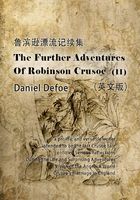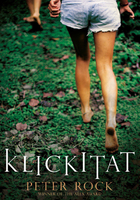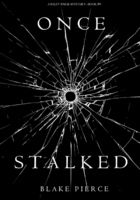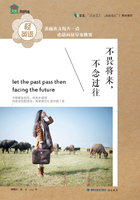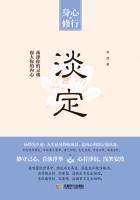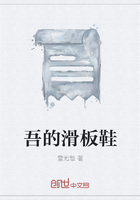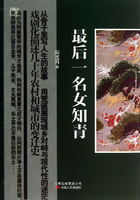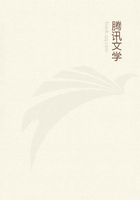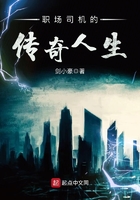It was another cold and restless night. Since we were moored alongside quite a large town we could hear the muezzins competing from their minarets at that point of the night, 'When a white thread may be distinguished from a black one'. I personally did not sleep after the competition. We were under way by about half past six. There is a bridge at Beni Suef but it is only half built. In Cairo I had been told that the bridge had already been ten years in the building and certainly the unfinished end where it hung out over the water had a rusty and depressed look about it. Just beyond the furthest point to which the bridge reached, an iron stake stuck out of the river at what was clearly the wrong angle. It was not buoyed. I should like to have found out the history of that stake but never did. In any case, there are so many quaint stories about bridges over the Nile one more would make no difference. There is the story, for example, which I told Alaa that very morning as we were passing the dangerous-looking stake on our way out of Beni Suef. I wanted him to tell me if it was true. There was an architect who designed a swing bridge for Cairo and it was completed and the king of Egypt turned up with much pomp and circumstance and pressed the button but nothing happened. Nothing ever did happen according to the story and the swing bridge stayed where it was without swinging and the pomp and circumstance left for other places as if for a previous engagement. Well, was it true?
'No,' said Alaa, 'it wasn't.'
'But my dear boy! I was told in the minutest detail – the architect went straight home to his apartment on Zamalik and shot himself. Architects always shoot themselves when things go wrong. It's a tradition. I bet the ancient Egyptian who made a mistake over the "Unfinished Obelisk" shot himself.'
'Where is this bridge?'
'You tell me.'
'I've never seen it,' said Alaa brusquely. 'I know the story. It's about Aboul-ela bridge. And in any case he didn't shoot himself. He went off and built something else. Maybe he built the Eiffel Tower.'
The wind of morning was keen.
'I expect the truth is he shot himself and then built the Eiffel Tower.'
All the same, there are some strange and authenticated stories about building bridges over the Nile. They are based in the huge, mild power of river water, with its unceasing pressure day and night, year in, year out. There was a bridge built with the best of intentions and the most elaborate of calculations, only somehow the river had not read the calculations and did something which was not in the figures. It just ignored the bridge altogether and went somewhere else so the bridge was left high and dry without any river to give it a reason for existing. Once a large river boat full of stone sank in midstream. The hulk broke the current at that point so that silt fell out of the water where it was slowed. The silt became a mud bank and then an island which is still there, all because of one boatload of stone. I wondered what the water would do with that stake at Beni Suef and its obviously wrong angle.
The river seemed a little wider above the bridge of Beni Suef than it had been in Cairo. As the dawn mists cleared away we could see that there was some evidence of prosperity over on the eastern bank – houses and villas and estates stretched out among palms under the brown and yellow desert. The levees were lower now and we could see over them. On the west bank by contrast and only a mile or so beyond Beni Suef there were real hovels and the abjectly poor fellaheen so often written about. There were small enclosures made of nothing but dried sugar cane or perhaps maize stalks, mud huts with a few canes laid across one corner to serve as a roof. Then we came to an unconcealed mud brick village and my facile ideas about the 'immemorial angle' were at once complicated out of existence. There was no immemorial angle; or rather there were all kinds of angles and curves; and all plainly the 'incompetent angle', for if the fellaheen had ever known how to build in mud brick they had forgotten now. Some of the angles actually went the wrong way so that the building leaned out instead of in. That this was a mistake was plain to see because some of the buildings had actually fallen and blocked alleys. One ridiculous hut had the left-hand wall leaning out and the right-hand wall leaning in so that the whole building leaned to the left and looked as if it would slump sideways at any moment. Reeds were employed in this complex of misuse, but scantily. It was all hopeless. Once again we were in time to see that curious moment when the trance of the night turned into the slow movements of dawn [see plate]. The first movements came from small children who ran about to keep warm. Women wrapped in black slowly crept out of holes in houses. Goats and donkeys moved but only just. Then we had left them behind and never saw the brisker movements of their day. That's the traveller's trouble when he's carried in a vehicle that he doesn't control. I've never forgotten travelling by express train on the old Great Western Railway and seeing a cricket match going on. The batsman had hit enormously towards mid-on, who was running frantically to catch the ball. He stretched out his hand and a house hid him. That's fifty years ago and I've often wondered whether he caught the ball or not. Silly. Anyway, we left the village coming back to life such as it was.
Alaa got out his battery of cameras. They were more costly than the boat, I should think. As the day broadened under a low sun we began to meet the Nile barges, powered craft called trams (the 'a' is long) which can take up to a couple of hundred tons of bulk cargo. Some craft are combined as you may see on the Rhine or Seine, one pushing the other. The bows and stern are so shaped as to interlock. The first one is called the 'pusher', and the one ahead of it the 'sandal', though it has no sail. Both together make up a 'fleat'. A tug is called a 'kicker' and usually pulls a line of sail sandals. The first pusher we saw had a large cabin right aft, rather like a landing craft, with painted kerosene cans containing hopeful shrubs. This was rare. Egyptians don't often go in for private gardens.
Now we entered a stretch of river with palms to the left and a low island on the right which seemed to consist of nothing but reeds, phragmites, set in shallow water and so close together you could not force a canoe through them. Once upon a time the island would have been nothing but papyrus, but not any more. Somehow, phragmites, the same tall flowering reed you can find by the Thames or any canal in England or indeed Europe, has ousted the famous paper plant. Now, except for some specimens cultivated in the Delta you have to go all the way down to the Sudan to find papyrus growing wild. These reeds were very tall, ten or twelve feet, I should think. Here and there fishermen were holed up among them in heavy rowing boats and looking rather like they do in Chinese paintings. Their oars once more were plain baulks of timber, the looms square, the blades non-existent. I asked Alaa what was the point of these seemingly ridiculous implements which are common on water from one end of Egypt to the other. He said you could consider the timber to have a long thin blade rather than a short broad one because of the huge weight of the heavy rowing boat. So there is another example of the apparently ludicrous having a logical explanation.
There was a faint breeze blowing the wrong way. I mean it was blowing from the southwest, which is where the hot Khamsin is supposed to come from, unseasonable at that time of the year. In any case, it was not only blowing the wrong way, but it was also cold. A notable phenomenon was the behaviour of the small sailing boats, which the Egyptians call feluccas, pronouncing the word 'felookah'. Well, the feluccas, not much bigger than rowing boats, can startle the curious onlooker because they appear to be contradicting the laws of hydrodynamics and aerodynamics all at the same time. They stand within less than one point of the wind. This is impossible. I was delighted for a while. But if you should see a felucca behaving so, look closely ahead of it among the reeds, and presently, fifty yards ahead of the boat you will detect a small boy plodding through the shallow water and attached to the felucca by a long, thin line. He is usually dressed in dirty brown and thus camouflaged by the reeds.
As the sun rose, the two levees which hid Egypt from us disappeared. It seemed a contradiction in the behaviour of water but I was glad of it, because now we could see countryside. Between us and the Eastern Desert, that brown cloud on the horizon, there were miles of scattered scrub and palms. By 8 o'clock in the morning the laden trek to the water was beginning. The women came from more than a mile away, but with huge baskets on their heads. The baskets were full of a clover of vivid green for the donkeys that had been left overnight by the river. Perhaps with the dense rural population and inchmeal farming the narrow strip by the river was the only grazing.
The Eastern Desert changed from a cloud to solid fists of rock and swept in towards the very bank of the river. It became a cliff dominated by a cemetery which dogs liked. On the western shore there were no brickyards eating up the rich soil but maize, sugar cane and date palms, with not a smoking chimney in sight. As for the eastern shore, it was edged by the speeding water. There were obvious shallows and rips. The current was faster in the tortuous channel that Shasli was following. The whole scene, river and shore, was wholly unlike the Nile of further north where we had seen the kilns and brickyards. Here all was rock and water [see plate]. There were lines of foam, then patches of flat water where it welled up again from the bottom after falling over a hidden ledge. There were more fleats and trams. We were following a whole line of them, all doing their best to wriggle through a complicated channel. But then there wasn't so much a procession as a crowd, some of them tied up two or three deep along the western shore with others dotted here and there, fast aground. There was much shouting and manoeuvring. I stayed in our cabin watching the whole affair through our ample windows, well out of it as our crew ran round the deck, poled with a boat hook, swore, invoked Allah and a whole litany of what I supposed were saints and shouted and gesticulated. We hit, of course, hit hard in a river which I had always fancied had a deep mud bottom, but my goodness no! It was a nasty crash and grind. You could feel every bit of stone gouging at her hull and worse still at her propeller as the current drew her off. She touched on what must have been compacted gravel. Shasli went slow ahead when we were free, feeling his way along a ledge, bump, bump, bump-here! So we were able then to thread among the stranded pushers, fleats and trams for we drew less water than they. There was a crowd waiting for the sixteenth of February and the ponding of the water behind each barrage in turn. It looked like a long wait.
We came through at last into calmer water between Biba and El Fashn. Looking back I could see how the Eastern Desert had projected into the river in a white headland. Once, Tura must have looked like that before the pharaohs began the gnawing at it that has been continual for five thousand years. They could start all over again on this white headland. Presumably all the shallow water and the complicated channel were caused by an extension of the white cliff but under water, making a kind of mini-cataract. This is not the same as the real Cataracts, the maxi-cataracts as it were, which are pink, black-spotted granite, but something like, done in hard limestone. Certainly the eastern side of the river was becoming increasingly dramatic. It was not just the white headland with its spectacularly layered rocks, but further on, vast limestone cliffs, sheer at the top with the bottom two-thirds hidden by screes of white stone. There was busier than usual river traffic here, cross-river traffic, for the western bank (a levee once more) was being revetted with blocks from the screes and cliffs of the eastern shore. The traffic was conducted in the sailing sandals. It is one of the few places left in the world, I suppose, where the use of sail is economic and it was very pleasant to see. Now we were in calm water I went on deck and asked Shasli if there were different names for small sandals and big sandals. Yes, there were. They were called small sandals and big sandals. Was there a special name for a big sandal with two masts? Yes. It was called a big sandal with two masts. I decided there and then to put together what I found out about Nile traffic as an essay. To tell the truth I was finding it more interesting than the temples. Jacob Boehme said that by the Hebrews' spoiling the Egyptians of their golden ornaments was meant the taking away of their wisdom and mystical power. Certainly the temples seem empty like brown cardboard boxes. Hieroglyphics? It's not that I don't know about them, I've forgotten them!
Hereabouts the sandals were loading busily. Because the white blocks of limestone were irregularly shaped and big, they were carried down individually by labourers who – how madly subjective – seemed to treat them with a kind of affection as though they were more important and had more individuality than bricks. A sail full of wind has the richness of a pregnant belly. We all know that, the words are there. A sandal loaded down with no more than six inches of freeboard but with a neat cargo of white limestone stacked under the boom, the crew sitting about on it as the huge sail moves the whole slowly across the water is wholesome, is wealth, is good. It is the epitome of industry with a human face; for the crew that loaded the sandal on one bank takes it across and unloads it on the other: and four or five men share the labour. Now it is easy to sentimentalize all this and I do not wish to. But if appearances are anything to go by, it is a happier fate to work white with the powder of limestone than red with the dust of bricks. However, my hands were clean and I was a temporary spectator. Nor do I know the relationship between the crews of the sandals and the men who were working in the cliffs of the quarries. For that job as far as I could see would have been better left to goats. There were pathways netting down the screes and men scrambling about on them. Their purpose was plain. They would start a block tumbling down the scree, working with others poised above them. The object was to clear the scree of its blocks, working upward from the bottom. Once a scree was clear it became a quarry, not of blocks but of rubble, which could be carted away and burned into quicklime. But in the quarries we passed – they seemed to impend over us – half of a scree would be dug away, leaving a vertical cliff. Since the angle of a scree is by definition the angle of rest of the material in it, this vertical cliff must be a deadly menace. It seems plain that this method of getting rubble out of a quarry is hideously dangerous. Here and there men were working at the very top of the screes close under the sheer cliffs. They must have known what they were doing; but by the tracks left in the scree from blocks that had fallen out of the cliff itself you could see their work was no more nor less than a kind of Russian roulette.
So they work. It is a stone area, no doubt about that. The white rocks tumble down the eastern cliff and on the western shore the lime kilns billow out smoke into thick pats that drift up and along and obscure the sky. Even so, smoke or no smoke, the blinding white cliffs on one side and blinding white revetments on the other will dazzle you into a headache in no time. It was quite a relief when that beast – I came to think of the desert in such terms – retired from the water and we chugged past miles of reedy marsh again. Here there were mud huts, built crazily as usual. But in the western shore were openings, the entries of canals which would parallel the main stream all the way down as far as Cairo possibly, or swing off into the Fayoum. There was only one use for brick in this area. Each time the great gates of an irrigation channel appeared in the west bank there would be a house – not a hut – built next to it for the gate keeper. He is clearly a man of power and prestige so only brick is good enough for him. But here is one aspect of present-day Egypt made plain. The brick is used as crazily as the fellaheen use mud, with not a vertical line anywhere. Has no modern Egyptian heard of a right angle? To think their ancestors were the first people to investigate the nature of a right-angled triangle! Today there doesn't seem to be a T-square or a plumbline in the country.
I had thought that we had done with the Eastern Desert for a bit; but just as I was getting accustomed to the marshes that tawny beast crept close then sprang at the water again and we were back in rock-country. But there was a difference. Back by the white headland and the quarries rock had dominated by sheer size and weight. Now it was rock's turn to suffer. Now we could see just what the earth was indifferently capable of in the way of twist and upthrust. Here, the top thousand feet of that mud-sand-boulder-filled canyon which is the Nile Valley exhibited contortions beyond belief. The whole place north of Maghagha is frozen in the act of a most titanic violence. Those strata which had lain level in the quarries, impending brutally by sheer dead weight, here were flicked and crumpled like so many sheets of paper. They, in their countless millions of tons, were flipped upright as if the demiurge's secretary had freed them for restacking then flung them down or sat on them or screwed the lot up. There was fire, too, extinguished now or tamped down, for darker leaves of igneous matter had been injected between the white limestone layers, had been forced up, squirted up, held so till they cooled and solidified. Those rocks have resisted erosion so that they jut at the sky like blades of knives. Here and there huge portions of the whole broke off and slumped forward in days before the canyon filled. Now their unburied tops remain as separate hills, castles, forts, contortions that seem too strange to be natural and ask for topographical names of genii, wizards, devils and the spirits of the desert, the Afrits. One of those dark leaves of igneous rock lies in the river next to the eastern bank. When we passed, the water being low, it was high and dry, a row of nasty teeth with a broken felucca chewed to pieces among them.
So. There are dangers, then, even in this apparently mild river. But here the shallows began again and the river seemed strewn with the typical Nile barges. Then just when it seemed we had entered the desert for good, this stretch, more dramatic than any other between Alexandria and Aswan, came to an end and we were chugging once more slowly between low banks, or call them little cliffs of brown mud. There was a large blue sky, unsullied by the smoke of lime kilns or brick kilns and coming down everywhere to a close horizon. These mud cliffs were so vulnerable that piles of dirty white limestone were placed in the water as jetties or groins to keep the current in the middle of the river. The mud cliffs are scored with parallel lines and I supposed these to be the marks of flooding, silt laid down year after year then revealed as the river ate its way, sidling from west to east. But the marks were so wide apart. I could not believe so much silt came down each season, but silt it was, for mile after mile there was not a stone or pebble. Every few hundred yards now there were tractors standing at the top of the little cliffs, each linked by a widebore pipe to the water. Despite that mechanization, women still processed down the cliffs and carried water away in metal or clay pots as if the ancestral rite was not to be abandoned for mere convenience. Indeed, I saw one little girl who could not have been more than six following a string of caryatids with a pretend pot on her head. This was my fabled region of Oxyrhynchus – more of that later – but the site was ten miles away across the fields and out of reach. The west bank was beautifully fertile with beans, drying maize and clover. The mud cliffs were fledged or hidden by fig trees. Wild ducks flew round in 'V's and fans.
Alaa and Rushdie descended into the stern sheets and played music [see plate]. In Arab music if you have a good thing you don't let go of it. The first three notes of Three Blind Mice but in the minor mode lasted them for rather more than half an hour. Of course after each repetition Rushdie did a tiny embroidered 'arabesque' but the sound was hypnotic. It was also quiet.
Just when I had decided that the striations in the mud banks could be nothing but markings of the seasonal flood before the building of the high dam we came to a section where they lay aslant in such a way that they could not have fallen out of water. A syncline? Cross-bedding? Terms vaguely remembered and perhaps never clearly understood floated through my mind. All that mattered really was that the river bank was not going to yield to quick amateur investigation. It seemed clear, too, that the apparent mud was harder than mud would be. I called it 'mudstone' and abandoned my inquiry.
Then I found that by the force majeur of Shasli and the rest of the crew, all speaking the Arabic I could not understand, we were now to tie up again well before darkness. I expostulated with Alaa, who explained there was nowhere between us and El Minya where we could tie up without finding ourselves too isolated in the deep countryside. Isolated? What were the dangers of lying to by ourselves? We tied up on the west bank but nowhere in particular as far as I could see, or find out from the map, among a gaggle of fleats and trams. We were alongside a lighter. I salaamed the Reis, or watchman, and got a magnificent navy salute in return. Why navy? The mudstone cliff, now we were near enough and still enough to examine it, I saw to be pockmarked and stippled with holes. Swarms of birds were wheeling about outside them in the tangerine light of the sunset. If they weren't swifts, they were swallows. For a moment or two, caught in this slow boat and frustrated I wished I could migrate with them back to Europe. The Western Desert was still out of sight but the eastern one lay crouched again far inland and contorted against a darkling sky. One contortion – but I couldn't be exact – was called Dilel Afrit which must mean the 'Demon's Tail', 'Devil's Tail'? Perhaps this was a haunted stretch of river, then, and all this traffic was huddled together for the night in fear of the supernatural.
I went below. We were caught between the ship's system doing its economy music and sounds from other craft. I stayed below to fill in my journal while Ann went up on deck well wrapped against the cold and anything else that might be going – bogles and beasties and rivermen. I tried to work out from the map where we would get when and decided that at our present rate of progress we could do no more than half of what we had intended.
Presently Ann came down again.
'Two men are smoking a hubble-bubble on the next tram?' she said. 'You ought to go and look.'
'Why?'
'They're stoned out of their minds.'
This was exotic – practically King's Road standard. I went on deck but the men had taken some hint and had vanished, leaving behind them nothing but a faint and rather sickly smell. There was light, though, for some of the craft had rigged up naked bulbs on deck. Alaa appeared and inquired how much money I had with me. When I told him he gave it as his opinion that we should last out. Then he wandered off across several decks between us and the bank, climbed it and vanished into the darkness of the countryside.
I stayed where I was, then struck by a sudden thought went to the bows and looked down at the Nile. Here the water was still. Either the grounded craft or the moored craft or perhaps the conformation of the bank ensured that there was no current at all. But in the light from the few naked bulbs hung here and there among the gaggle I could see the surface of the water. It did not boil or seethe. But it was thickly patterned with interlacing circles, ripples, blips and pips. It looked as if small fish were gorging themselves on insects at the surface or on larvae hanging from it or swimming free. It was my first intimate glimpse of what one might call the private life of the Nile, the nature of that water when stagnant. I cannot say I cared for it. But how much of my distaste was reputation? Tourists are strictly cautioned against drinking Nile water or bathing in it. Yet where the water moves it seems no more than a trifle muddy. But near the bank, where the water does not move? Or in small, stagnant side canals? No indeed! I had now seen – ticking the events off on my fingers – people spitting in the Nile, pissing in it and shitting in it. On the same mud beaches where these events were taking place I had seen people standing in it, washing in it, bathing in it and drinking it. I had even seen a mother scoop a tinful of the stuff and give it to her small child to drink. Well, I thought to myself, see what happens to them, poor, benighted people! And yet it did not appear that anything happened to them. Whatever a medical man might have said, to the layman's eye there was nothing to distinguish these men and women and these cheerful, active children from their European equivalents brought up on company's water. Perhaps the lame and the halt and the blind were lying up, tucked away in those crazy mud huts or shivering under roofs of maize stalk. To be able to reach the water's edge and so be subjected to the stare of the passing westerner was in itself a sign of some health. For the rest it would be generations, I thought, before these people living at the waterfront would learn only to drink from the deep boreholes or the purified water of the towers. Meantime there was nothing to be done but remember with relief that we ourselves were drinking mineral water and never touched that sinister soup with its pips and blips.
I looked round and up. The sky was brilliantly loaded down with stars and all the hazier companies of heaven, but the air was cold.
I went below again. Ann had already climbed into her bunk and was reading. There was nowhere to go and nothing to do. I lay in my bunk and thought about geology and astronomy and anthropology and theology and zoology and parasitology and the intestinal flora and fauna of Egypt with its claws and teeth. The book I had promised to write, where was its centre, what was it all about?
Home seemed a long, long way away.

